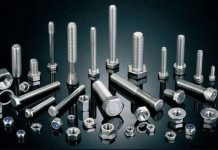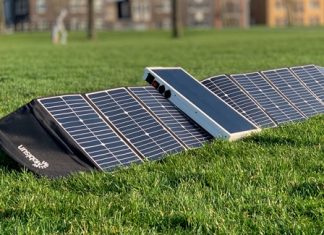
Electrical testing and safety inspections are regularly carried out in residential and commercial buildings to test electrical installations, like wiring, circuit breakers and switches, to ensure that they are in proper working order and don’t pose safety risks to the household or members of the public. Electrical testing is also performed on electrical appliances and equipment for the same reason. Qualified electricians or electrical technicians conduct tests using various types of electrical testing equipment to measure current, voltage and resistance. They are tasked to interpret measurements and locate and repair any potential damage or faults in appliances, equipment or wiring. Testing is also done during the installation of electrical supply in any premises and is performed under strict government guidelines.
Types of Electrical Testing Equipment:
Micro-Ohmmeter
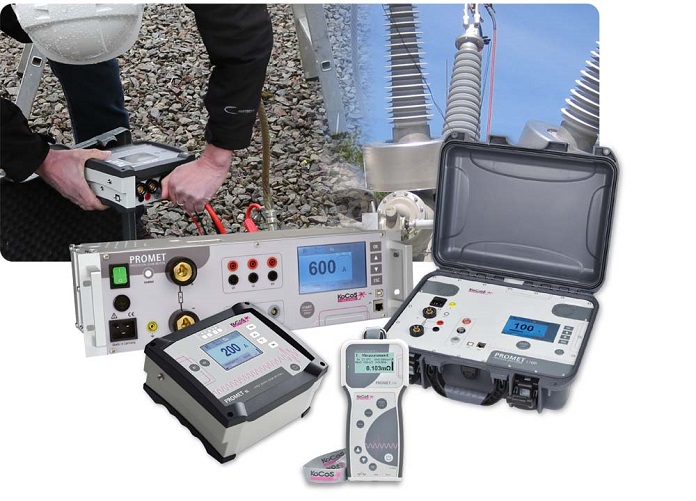
Also called a DLRO, or digital low-resistance ohmmeter, or ductor, a micro ohmmeters measures low resistance, with figures in micro-ohms, at currents generally ranging from 10A to 200A. Slight changes in low-resistance values are a sign that there is damage between the two points of contact being tested. The test results can signal electrical fatigue, temperature changes, corrosion or damage from vibration. Micro-ohmmeters are valuable tools in many areas, including testing switchgear and switchboard assemblies, all kinds of switches, fuses and circuit breakers, testing low and medium voltage in cables, small transformers, motor starters and different motors in machinery, grounding systems etc. High resistance values can lead to overheating, loss of energy, or electrical fires.
Micro-ohmmeters make low resistance calculations using Ohm’s law. The device passes a DC current from a battery source into the circuit or components being tested. Resistance is then calculated as the inverse value of the applied current. Digital meters used today offer extremely precise results within the range of 0.1µΩ to 400Ω. Most units have multiple testing modes for a wide variety of testing, with results memorised in data banks. Testing can be both on high or low voltage circuits and equipment. Micro-ohmmeters allow for extremely precise, simplified, safe testing in portable, lightweight units.
Megohmmeter
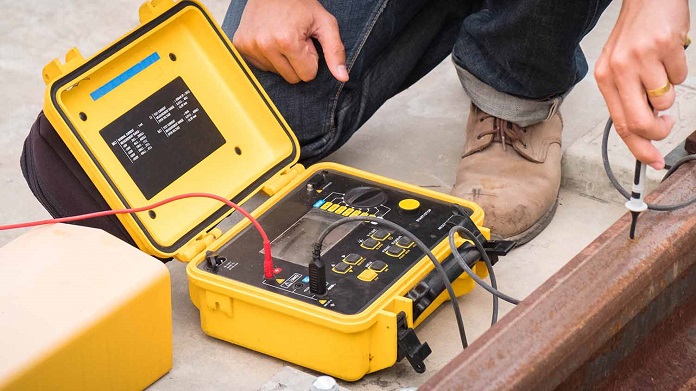
Megohmmeters, or simply called meggers, are electrical testing devices used to meter resistance in insulators. During the testing, the megohmmeter applies a very high battery generated DC current, in the range of 500 to 1500V DC, between a conductor, and one or several other conductors for a specific duration of time. If the wire or cabling in the tested units are in working order, there should be no current flowing between the conductors, meaning they are insulated. Readings should display high resistance levels, between 35 to 100 MΩ. Megohmmeters are used in a range of fields to test electrical insulation, like cables and cable shielding, transformers, coils, electrical motors, circuit boards, capacitators and resistors, and more.
Insulation Resistance testers
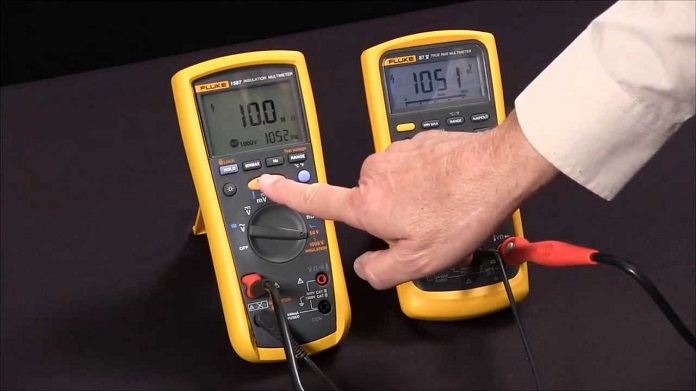
Similar, but more sophisticated devices are Insulation resistance testers which also measure continuity, frequency and voltage. Like micro-ohmmeters and megohmmeters, there are smaller portable handheld variants of insulation resistance testers. Besides resistance, measuring voltage and current in insulation affected by changing conditions like temperature, chemical contamination or humidity will give more accurate results.
Voltmeters
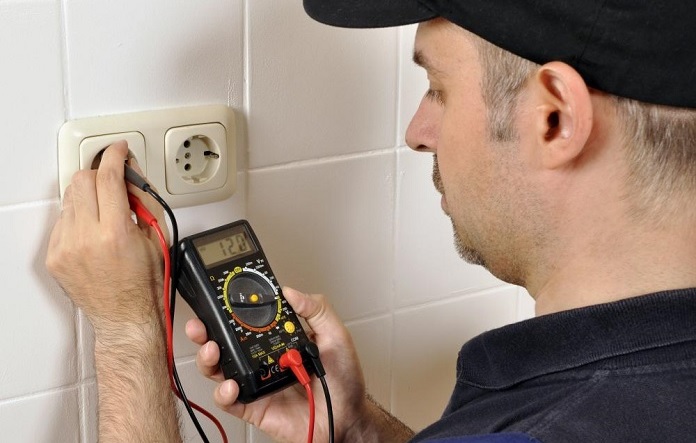
Voltmeters are used to test voltage and the electrical potential difference between two points in an electrical circuit. There are voltmeters specifically for DC current and voltmeters of AC current. Some types can measure both. Older analogue voltmeters consist of a coil that is affected by magnetic forces in the current to provide voltage readings. These have recently been replaced by digital voltmeters and insulation resistance testers which provide more precise results under different conditions.
Ammeters
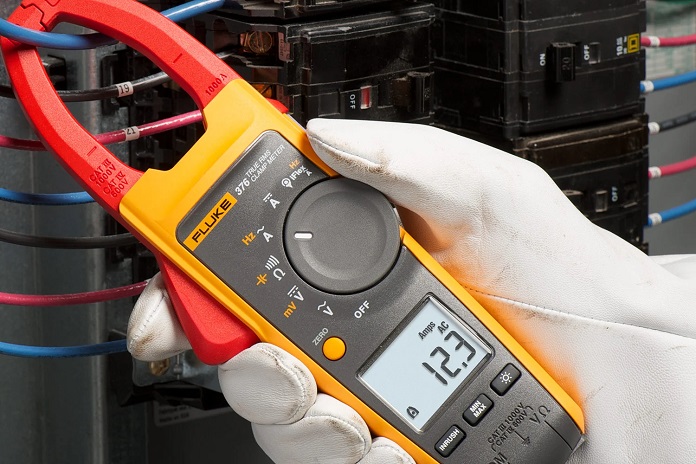
Ampere or ammeters are used to test DC and AC current with test results expressed in Amperes. Ammeters are connected in series with the tested electrical circuit. They are some of the oldest testing equipment, with older designs like moving coil ad moving magnet ammeters being replaced with digital variants using shunt resistors that produce a calibrated voltage proportional to the flowing current.
Multimeter
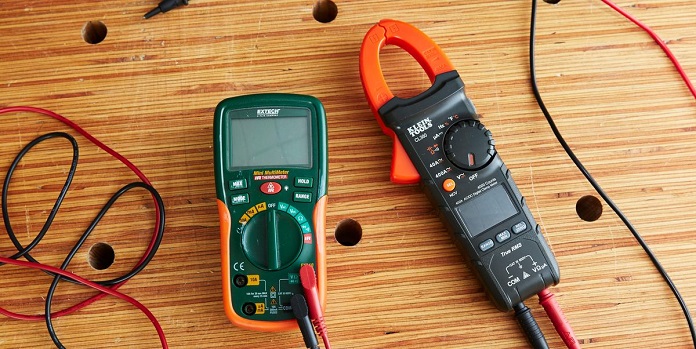
Multimeters are the Swiss Army knives among electrical testing devices. They are versatile and relatively inexpensive when compared to more specialised heavy-duty testers. As the name implies, they are used to test a variety of electrical states, including resistance, both AC and DC voltage, current and frequency, basically combining the features of the megohmmeters, insulation resistance testers, micro-ohmmeters, voltmeters and ammeters. They are used in many fields like testing various types of electronic equipment, household appliances, wiring and power supply. Small handheld digital units are the norm today.
What to Consider when Buying
The electrical testers above are basic testing equipment, used both by professionals and DIYers. Some are preferred in industrial settings, where varying or extreme conditions can affect how the testers work and the accuracy of results. For detecting even the smallest resistance changes in basic switches or cables a micro-ohmmeter will get the most precise readings. A multimeter can be used for the same purpose but is preferred for small-scale projects. Most testers are small, handheld units with prices varying depending on build, versatility and features. Electrical testing equipment is sold in specialised stores throughout Australia.





